What is the Maliau Basin?
The Maliau Basin is a Protected Forest Reserve in the heart of Sabah, Borneo. Surrounded by towering cliffs, the area has seen little human exploration and has evolved into its own distinctive ecosystem, with rare flora and fauna, towering waterfalls and untouched ancient rainforest. This is an area we visit on our Lost World holiday specifically but it can also feature on a tailormade Borneo adventure holiday.
You can read more about how challenging a hike is in the Maliau Basin on our blog, but for most people this region is a special journey to a lost world of ancient forests, a giant amphitheatre which has been completely overgrown by jungle and is home to more than 2000 species of animals and plants, of which many are only found in Borneo. Sumatran rhino, orangutan, pygmy elephant, banteng and sambar deer can be found here, but it is really the trees that steal the show. Plus the feeling of really entering a lost world when you hike here, the top of the basin itself acts as a natural barrier and the interior is so dense that even the Murut warriors would only venture in occasionally. As a trekking experience, Maliau Basin is unique and quite spectacular.
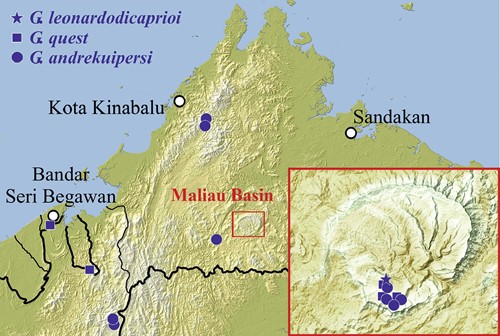
Maliau Basin is remote, almost a full day travel from Kota Kinabalu or Tuwau.
The basin has about 70 kilometres of trails and expect all day strenuous hikes in hot and humid conditions. The best time to travel is between January and July during the 'dry' season, with April and May being the driest. Accommodation is fairly basic with squat toilets and most treks are circular for three to five days around the basin. Trails visit the famous waterfalls, the Linumunusat Lake and of course the Maliau river itself. There is also an option to trek to the top of Mount Lotung which is a demanding challenge on muddy paths and in the heat.
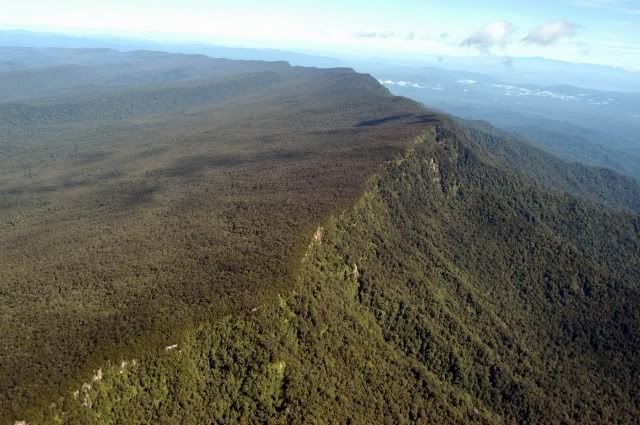
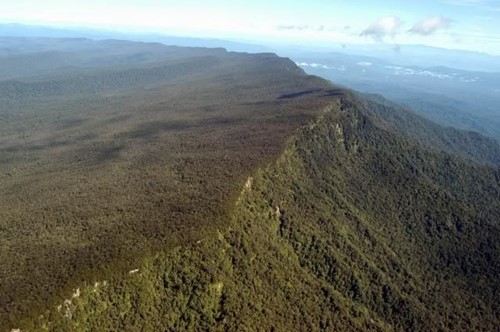
Seen from the air, you can clearly the rim of the basin which acts as a natural barrier to the lost world within.
History of the Maliau Basin
While local tribes will have likely known of the area, there is no archaeological evidence of any permanent human settlements within the Maliau Basin. The first encounter by a westerner was in 1949 when a pilot spotted the expansive crater carved into the forested landscape, but it was not until 1988 when a scientific expedition delved into the hollow that any in-depth exploration occurred.
Ecology of the Maliau Basin
Unlike many other areas of rainforest in Borneo, the Maliau Basin remains entirely primary rainforest, meaning no part of it has ever been logged and regrown. With over 2,000 different species of plants and animals, this wonderland of wildlife is every nature lovers dream. Comprising four different forest types, the plant diversity excels most other jungles around the globe.
The impenetrable jungle means that while the Maliau Basin is home to large numbers of wildlife, chances of seeing the better-known animals are slim. Accompanied by an expert nature guide for the entire trek, you will focus on spotting weird and wonderful fungi, flowers, insects, snakes and lizards.
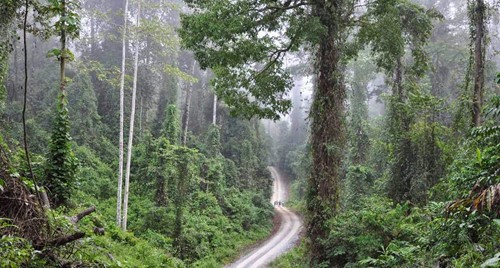
Trail through the forest in the Maliau Basin
Why Visit the Maliau Basin?
A trek to the Maliau Basin is suited to intrepid travellers looking for an authentic jungle experience with a keen interest in nature, wildlife and forests. The trip can be challenging at times due to the muddy and uneven terrain of the forest, but more than fitness, an enthusiasm for real adventure is what will ensure any trekker gets the most from this rare experience.
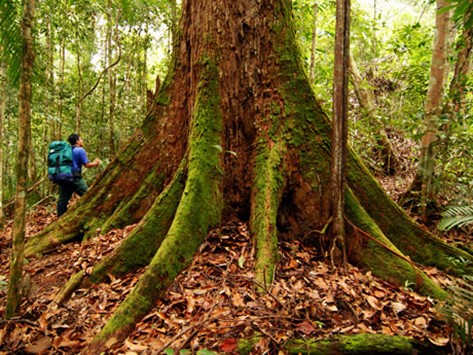
Gargantuan trees greet you in the depths of the jungle and in many ways they steal the show.
Maliau Basin packing list
It will be hot and humid so bring plenty of bags to protect electrical equipment. Quick dry clothing and leech socks are important, and a sleep sheet for the night. Good walking boots are essential for the paths, and don't forget insect repellant, toilet paper and a hand sanitiser, rehydration tablets and some antiseptic. If you can put everything in a waterproof backpack that would be best.

